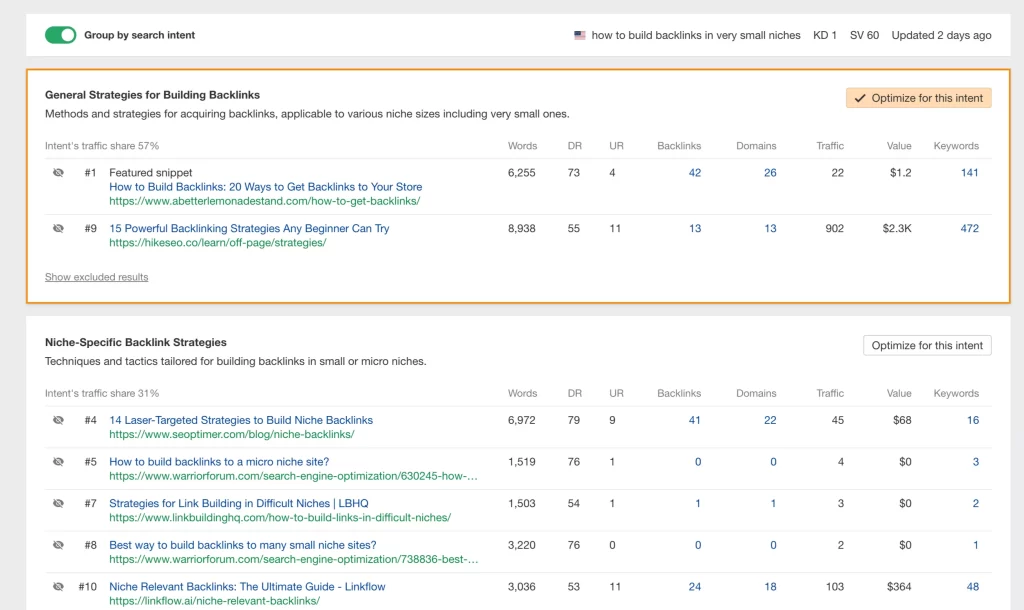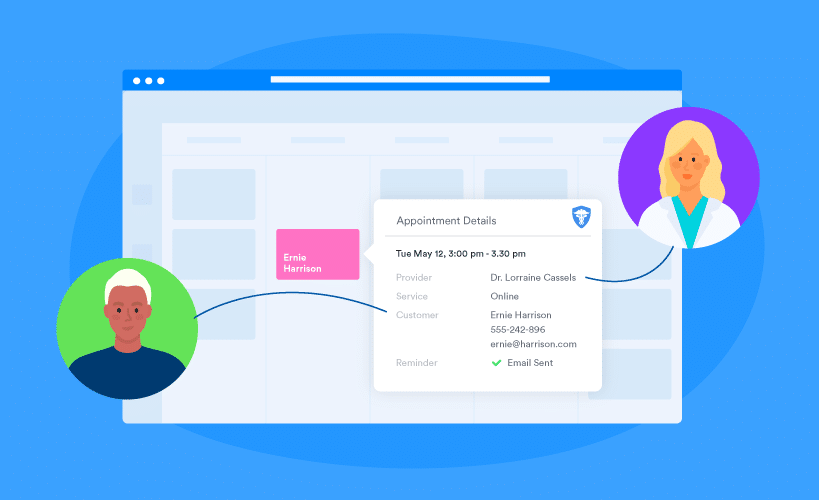Building backlinks in very small niches can seem tough. Competition is low, but so are the opportunities.
How To Build Backlinks In Very Small Niches? To succeed, you need a smart approach. Small niches often lack the big sites and networks found in broader markets. This means finding quality backlinks requires creativity and effort. Effective backlink strategies can help improve your site’s visibility and credibility, even in these small niches.
In this post, we’ll explore practical techniques to build backlinks. These methods will help you stand out, even in the most specific and tiny niches. Keep reading to learn how to enhance your link-building strategy and achieve better results in your unique market.

Introduction To Backlinks
Backlinks are links from one website to another. They are crucial for SEO. Search engines use them to rank websites. High-quality backlinks can boost your site’s visibility. They show that others trust your content.
Importance Of Backlinks
Backlinks act as votes of confidence. They tell search engines your site is valuable. Websites with many backlinks rank higher. This leads to more organic traffic. Backlinks can also bring direct traffic. Visitors click on the link and visit your site.
There are two types of backlinks:
- DoFollow – These pass on SEO value.
- NoFollow – These do not pass on SEO value.
Both types are useful. DoFollow links are more beneficial for SEO.
Challenges In Small Niches
Building backlinks in small niches is tough. There are fewer websites to link back. You must find creative ways to earn backlinks. Relationships are key. Reach out to niche-specific websites. Offer guest posts or collaborations.
Here are some challenges you might face:
- Limited websites in your niche.
- Higher competition for backlinks.
- Difficulty in finding quality sites.
But don’t worry. There are strategies to overcome these challenges. Focus on quality over quantity. Build strong relationships. Offer valuable content. These steps can help you earn backlinks even in small niches.
Identifying Quality Backlink Opportunities
Building backlinks in very small niches can be challenging. The key is to focus on identifying quality backlink opportunities. This ensures that your efforts yield the best results. Let’s dive into some effective strategies.
Researching Competitor Backlinks
Start by analyzing your competitors. Look for websites that link to them. You can use tools like Ahrefs or SEMrush to find these links. Create a list of these sites.
- Identify the backlinks that have high domain authority.
- Check the relevance of the linking sites to your niche.
- Note down any patterns or common sources of backlinks.
Evaluating Link Quality
Not all backlinks are created equal. It’s crucial to evaluate the quality of each backlink opportunity.
- Domain Authority: Higher domain authority sites provide better link juice.
- Relevance: Ensure the site is relevant to your niche.
- Traffic: Sites with higher traffic can drive more visitors to your site.
Use tools like Moz or Majestic to assess domain authority. Check the site’s content and audience to confirm relevance.
Building quality backlinks takes effort but is worth it. Focus on high-quality, relevant sites for the best results.
Creating Shareable Content
Crafting shareable content for small niches can help build valuable backlinks. Focus on unique, engaging topics that resonate with a specific audience. Encourage sharing by making the content easily accessible and visually appealing.
Creating shareable content is key in building backlinks, especially in very small niches. Shareable content attracts attention and encourages others to link to it. This can boost your site’s authority and drive more traffic. But what makes content shareable? Let’s explore.
Content Types That Attract Links
Certain types of content are more likely to attract links. These include: 1. How-to Guides: These provide step-by-step instructions. They are useful and practical. 2. Infographics: Visual content is more engaging. Infographics present complex information simply. 3. Case Studies: These show real-life examples. They add credibility and value. 4. List Posts: Lists are easy to read and share. They break down information into digestible pieces. 5. Original Research: Data-driven content is unique and informative. Others often reference it. These content types have higher chances of being shared. They provide value to the reader.
Crafting Engaging Content
Creating engaging content requires a few key elements. Start with a compelling headline. Make it clear and interesting. Use strong verbs and keep it concise. Next, focus on the introduction. Hook your readers in the first few sentences. Ask a question or state an interesting fact. This keeps them reading. Break your content into short paragraphs. Use subheadings to organize it. This makes it easier to read and follow. Include images or videos. Visuals make the content more engaging. Tell a story or give examples. This makes the content relatable and interesting. Finally, end with a clear call to action. Encourage your readers to share or comment. By focusing on these elements, you create content that people want to share. This increases your chances of getting backlinks. “`
Building Relationships With Influencers
Building relationships with influencers is crucial for acquiring backlinks in small niches. Influencers can amplify your content, giving you exposure to a targeted audience. This exposure often translates to valuable backlinks. Here’s how you can connect with niche influencers.
Finding Niche Influencers
Identify influencers who are relevant to your niche. Use tools like BuzzSumo and Followerwonk to find them. Look for influencers who have an active presence and engage with their audience.
| Tool | Function |
|---|---|
| BuzzSumo | Find popular content and influencers |
| Followerwonk | Analyze Twitter accounts and find influencers |
Pay attention to their engagement rate. Influencers with a smaller but active following can be more valuable than those with a large but passive audience.
Approaching Influencers
Start by engaging with their content. Leave thoughtful comments and share their posts. This can help you get noticed.
- Engage with their content
- Leave thoughtful comments
- Share their posts
Once you’ve established some rapport, reach out with a personalized message. Mention specific content of theirs you enjoyed. Explain how your content aligns with their interests.
Here’s a simple template for your message:
I’ve been following your work on [specific topic] and enjoyed your recent post on [specific post]. I thought you might find my latest article on [related topic] interesting. It covers [brief summary].
Be respectful of their time. Keep your message short and to the point. Offer value and avoid being overly promotional.
Leveraging Guest Posting
Leveraging guest posting is an effective way to build backlinks in small niches. Guest posting involves writing articles for other blogs in your niche. This helps you get your content in front of a new audience. It also allows you to build relationships with other bloggers. These relationships can lead to more opportunities for backlinks. Below, we will explore the steps to leverage guest posting for backlinks.
Identifying Relevant Blogs
First, find blogs that are relevant to your niche. Use search engines to find blogs that accept guest posts. Look for blogs with a good amount of traffic and a strong online presence. Check their domain authority to ensure they have a good reputation. Make a list of these blogs for outreach.
Use keywords related to your niche when searching. For example, if your niche is organic gardening, search for “organic gardening guest posts.” This will help you find blogs that are a good fit. Also, look at the comments and engagement on their posts. This can give you an idea of how active their audience is.
Writing Compelling Guest Posts
Once you have identified relevant blogs, write compelling guest posts. Start with a strong headline that grabs attention. Your content should provide value to the readers. Share tips, insights, or personal experiences related to your niche. Ensure your post is well-structured and easy to read.
Include a clear call to action at the end of your post. This can be a link to your website or a suggestion to try something new. Always follow the blog’s guidelines for guest posting. This shows respect for the blog owner and increases your chances of getting published.
Proofread your post to ensure it is free of errors. Use simple language that is easy to understand. Remember, your goal is to engage readers and provide value. A well-written post can lead to more backlinks and increased traffic to your site.

Credit: www.prestigelinks.com
Utilizing Social Media For Backlinks
Building backlinks in small niches can be challenging. Yet, social media offers a powerful way to attract backlinks. By sharing valuable content and engaging with your audience, you can build an online presence that encourages others to link to your website.
Sharing Content On Social Platforms
Share your content on various social media platforms. This includes Facebook, Twitter, LinkedIn, and Instagram. Use these platforms to reach a wider audience. Post links to your blog posts, articles, and other valuable content.
Here are some tips for sharing content:
- Use eye-catching headlines: Grab attention with compelling titles.
- Include visuals: Images and videos increase engagement.
- Post regularly: Maintain a consistent posting schedule.
- Use relevant hashtags: Reach users interested in your niche.
Sharing your content on social platforms helps you gain visibility. More visibility often leads to more backlinks. People who find your content useful may link to it from their own websites or blogs.
Engaging With Your Audience
Engage with your audience by responding to comments and messages. Show that you value their input. This builds trust and encourages them to share your content.
Here are some ways to engage with your audience:
- Reply to comments: Respond to feedback on your posts.
- Ask questions: Encourage discussion by posing questions.
- Host live sessions: Use live video to interact in real-time.
- Join groups: Participate in niche-related groups and discussions.
Active engagement keeps your audience interested. They are more likely to share your content and link to your site. Building relationships on social media can lead to more backlinks from trusted sources.
By utilizing social media for backlinks, you can leverage these platforms to grow your online presence. Sharing valuable content and engaging with your audience are key strategies in small niches.
Participating In Niche Forums And Communities
Building backlinks in small niches can be challenging. Participating in niche forums and communities can help. These platforms provide unique opportunities to connect with a targeted audience and gain valuable backlinks. Engaging in these communities can enhance your site’s authority and drive traffic.
Finding Active Communities
Identifying the right forums and communities is crucial. Use search engines to find active niche forums. Keywords like “niche + forum” or “niche + community” can help. Look for forums with regular posts and high engagement. Consider these factors:
- Member activity
- Number of threads
- Quality of discussions
Join forums that align with your niche. Avoid forums with spam or low-quality content.
Contributing Value To Discussions
Participation is key. Start by reading existing threads. Understand the community’s tone and topics. Then, contribute meaningful comments. Ensure your contributions are:
- Informative
- Relevant
- Respectful
Share your expertise. Answer questions thoroughly. Provide insights that others find valuable. Over time, members will trust your input.
Include a link to your site when appropriate. Ensure it adds value to the discussion. Avoid spammy links. Instead, offer genuine resources. This builds credibility and encourages natural backlinks.

Credit: sharprocket.co.uk
Monitoring And Analyzing Backlink Performance
Building backlinks in very small niches can be challenging. One critical aspect is monitoring and analyzing your backlink performance. This ensures that your efforts yield desired results and helps refine your strategies for better outcomes.
Using Seo Tools
Effective monitoring starts with the right tools. SEO tools can track your backlinks and provide valuable insights.
- Ahrefs: This tool offers a comprehensive backlink profile.
- SEMrush: It helps you analyze your competitors’ backlink strategies.
- Google Search Console: This free tool shows your site’s backlinks.
These tools can help you understand which backlinks are driving traffic. They also help identify low-quality links that could harm your site.
Adjusting Strategies Based On Data
Analyzing the data from these tools is crucial. It enables you to adjust your strategies for better results.
Consider these steps:
- Identify successful links: Look for patterns in your most effective backlinks.
- Remove harmful links: Use tools to disavow harmful backlinks.
- Focus on high-quality sites: Aim to get backlinks from reputable sites in your niche.
Continually refine your approach based on performance data. This helps maximize the effectiveness of your backlink strategy.
| Tool | Primary Function |
|---|---|
| Ahrefs | Comprehensive backlink profile |
| SEMrush | Competitor backlink analysis |
| Google Search Console | Shows site’s backlinks |
Using these tools and adjusting your strategies based on data helps you build a robust backlink profile. This is essential for improving your site’s visibility in very small niches.

Credit: verlynagency.com
Frequently Asked Questions
How Can I Get Backlinks In A Small Niche?
To get backlinks in a small niche, focus on creating high-quality, unique content. Reach out to niche-specific blogs and websites. Build relationships with influencers and engage in relevant online communities.
Are Niche Directories Useful For Backlinks?
Yes, niche directories can be useful for backlinks. They provide targeted traffic and relevant backlinks. Ensure the directory is reputable and well-maintained.
Can Guest Posting Help In Small Niches?
Guest posting is effective in small niches. It increases exposure and builds quality backlinks. Target blogs within your niche for the best results.
What Role Do Social Media Play In Backlink Building?
Social media helps in backlink building by increasing content visibility. Share your content on relevant platforms. Engage with your audience to encourage sharing and linking.
Conclusion
Building backlinks in small niches can be challenging but rewarding. Focus on quality content. Connect with niche influencers. Engage in relevant communities. Keep your strategies simple and consistent. Patience is key. Results may take time, but they will come. Always aim for value and authenticity.
Your efforts will pay off in the long run.





